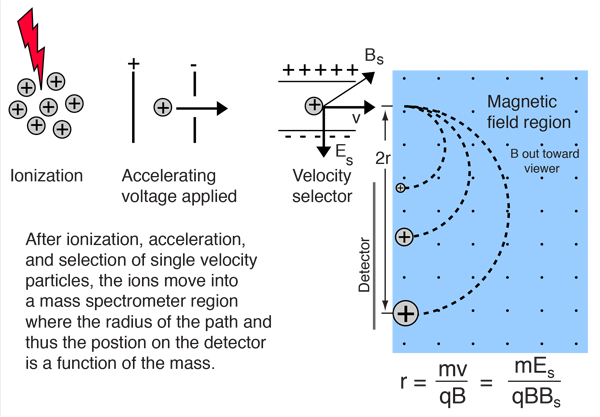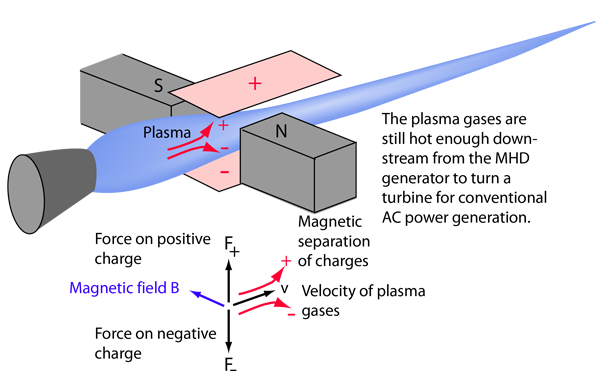Mass Spectrometer
The mass spectrometer is an instrument which can measure the masses and relative concentrations of atoms and molecules. It makes use of the basic magnetic force on a moving charged particle.

| Derive radius expression | How does a velocity selector work? |
| Magnetic interactions with charge | Applications of mass spectrometers |
Electromagnetic force
Magnetic field concepts
| HyperPhysics***** Electricity and Magnetism | R Nave |



